Hip dysplasia is a Genetic Disorder that severely affects dogs. It is a condition in which the hip joint does not function properly, making it difficult for the dog to walk and move around. If you can’t detect hip dysplasia and treat it early on. It can lead to joint replacement surgery, arthritis, lameness, and even death.
In this blog, we will discuss Hip dysplasia in dogs in detail, as well as the signs and symptoms you should watch out for. Make sure to read to the end to get a complete picture of what hip dysplasia is and how to prevent it from developing in your dog.
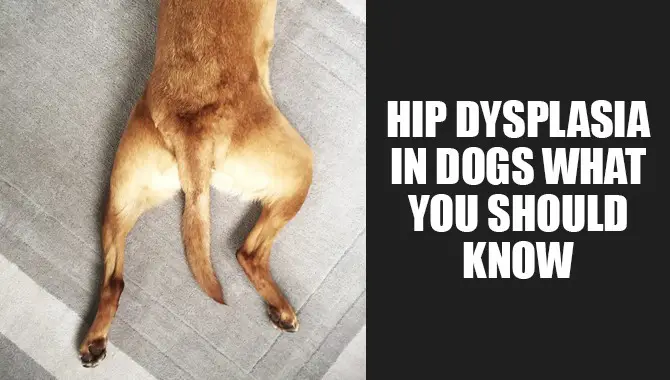
What Is Hip Dysplasia
Hip dysplasia is a condition that affects the hip joint in dogs. It happens by abnormal development of the hip bones, which can cause pain and instability in the joint. Treatment for hip dysplasia typically involves surgery to replace or fix the affected joints. Dogs with hip dysplasia may also require ongoing exercise and physical therapy to maintain mobility and healthy hips.
If your dog shows signs of hip dysplasia, it’s important to bring them to a veterinarian for a diagnosis and to begin treatment as soon as possible. Hip dysplasia is a life-threatening condition, and early intervention is key to ensuring a dog’s long-term health and happiness.
A Detailed Discussion On Hip Dysplasia In Dogs – Follow The Guide Below
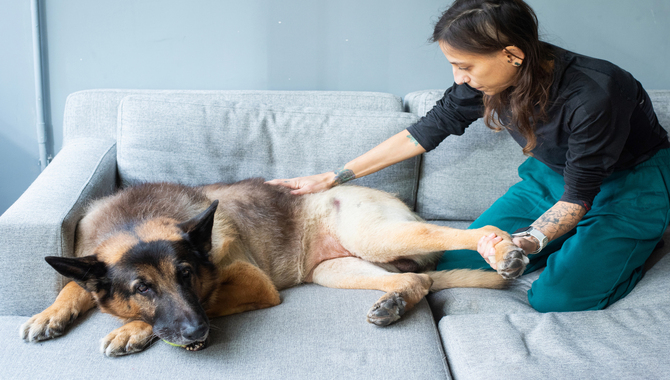
Hip dysplasia is a condition in which the hip joint does not develop evenly, resulting in difficulty moving the dog and pain. It is a common disease in dogs. And we can detect it early by examining our dog by a veterinarian specializing in orthopedics. If left untreated, hip dysplasia can lead to arthritis and other health problems.
Several treatments are available for dogs with hip dysplasia. But it may require surgery to correct the problem fully. If your dog shows signs of hip dysplasia, it is important to seek out professional help as soon as possible. Remember that hip dysplasia is a genetic disease, and your dog may or may not develop it.
There are several different causes of hip dysplasia in dogs. One is genetics, and some breeds are more prone to the condition than others. For example, German Shepherds, Golden Retrievers, Labrador Retrievers, and Mastiffs are at an increased risk. Other potential causes include rapid growth rates (due to poor nutrition or supplements), joint trauma, and excessive weight gain during puppyhood.
Causes Of Hip Dysplasia
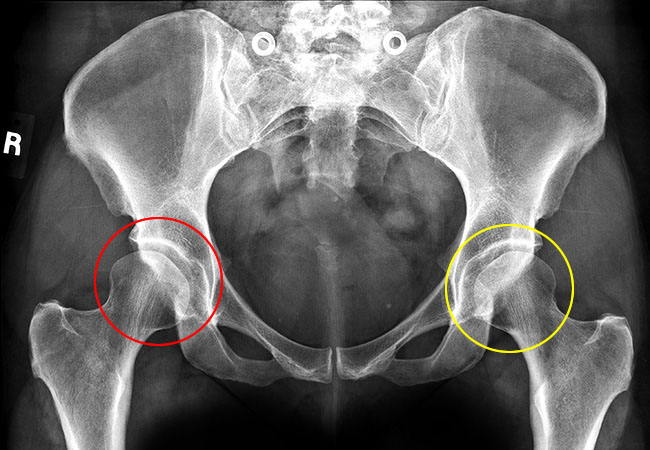
Hip dysplasia is a congenital disorder that affects the hip joint. Several factors, including genetics and environment, can cause it. Signs of hip dysplasia include poor movement, pain when walking or running, and lameness in the hind legs. Because hip dysplasia is such a common condition, it’s important to have your dog checked for hip dysplasia regularly by a veterinarian.
If you notice any of these signs in your dog, it’s important to have them checked out as soon as possible. It’s also a good idea to keep your dog on a healthy diet and provide them with plenty of exercises.
If you notice any signs of hip dysplasia in your dog, don’t hesitate to bring them in for a checkup. You can treat hip dysplasia, but it’s important to check out as soon as possible. And it will ensure a proper treatment plan to put in place.
What Are The Signs Of Hip Dysplasia In Dogs?
Hip dysplasia is a condition that affects the hip joint, which can cause discomfort and pain in dogs. The early signs of hip dysplasia are subtle- your dog may show some wear and tear on its hips. Suppose you notice any of the following signs.
In that case, it’s important to take your dog for a checkup: decreased mobility in their rear legs, difficulty getting up from a sitting or lying position, limping at rest, using their rear end to move around rather than walking correctly on three legs, favoring one side when standing or moving about.
If you suspect your dog has hip dysplasia, contact your veterinarian immediately for an examination. Surgery is often the best option for your dog with hip dysplasia. If you’re a dog owner, you may be aware of hip dysplasia, a condition affecting the hip joint. Hip dysplasia is a genetic disorder that can lead to pain and disability in your dog. Signs of hip dysplasia in dogs include:
- Limping or hobbling when your dog walks
- Difficulty getting up from a seated position
- Unusual gait, with an exaggerated swing of the hindquarters
- Swelling Around The Hip Area
Which Breeds Are Prone To Canine Hip Dysplasia?
Hip dysplasia is a common canine condition that affects any breed of dog. Breeds more prone to hip dysplasia include Boxers, Bulldogs, Rottweilers, German Shepherds, Dobermans, and English Bulldogs. If you’re considering adopting a puppy or dog with hip dysplasia, thoroughly research the breed before deciding.
There is no consistently effective treatment for canine hip dysplasia – only management strategies like exercise and diet can help improve the dog’s quality of life. At the same time, hip dysplasia is a serious medical condition. You can manage it with a combination of exercise and dietary supplements. Remember that hip dysplasia is inheritable, so make sure to breed responsibly.
Hip Dysplasia In Puppies
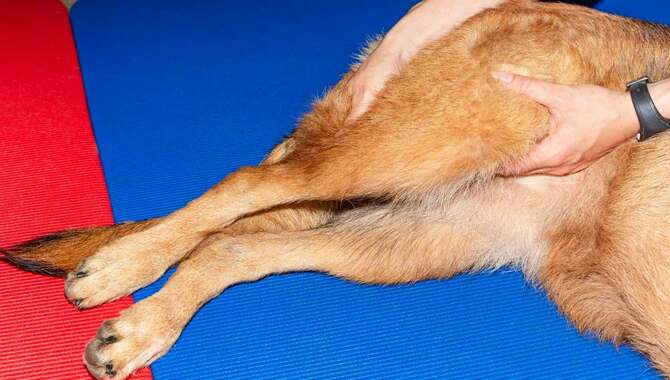
If you’re planning to buy a dog, hip dysplasia is something that you should be aware of. Hip dysplasia is a genetic disorder that affects puppies of all breeds, and it’s most common in large and giant breed dogs such as German Shepherds, Rottweilers, and Great Danes.
Signs of hip dysplasia in puppies include abnormal joint movement, lameness, and reluctance to move around. If you are buying your puppy from a breeder, it is important to ask which breed they have in their line-up that is prone to this disorder.
If It Is Hereditary, Are Certain Breeds Affected More Than Others?
Hip dysplasia is a genetic disorder that can affect dogs of all breeds, but certain dog breeds are more prone to it than others. If you breed from dogs with hip dysplasia genes, your puppies have a higher chance of developing the condition. Early detection and regular veterinary checkups are key to helping your pup live a long and healthy life with hip dysplasia.
How Is Hip Dysplasia Diagnosed?
Hip dysplasia is a condition that affects the hip joint, which can cause pain and difficulty moving around. If your veterinarian diagnoses hip dysplasia in your dog, they will inspect your dog’s hips to determine the extent of the problem.
Your dog may require surgery to correct the problem After confirming the diagnosis. In most cases, a healthy diet and exercise routine will help prevent hip dysplasia in dogs. However, hip dysplasia is a serious condition and you should not take it lightly.
It is important to check-up your dog by a veterinarian as soon as possible. Medication cannot cure hip dysplasia, but your dog can lead a happy and healthy life with treatment and proper care.
How Can Hip Dysplasia In Dogs Be Prevented?
Hip dysplasia is a genetic disorder that causes hip joint dysplasia. A number of factors, including congenital disabilities, obesity, and genetics, can cause it. If you notice any of these signs in your dog, it’s important to take them to see a veterinarian for testing and diagnosis.
If your dog has hip dysplasia, it may be difficult for them to move around properly, and it may experience pain and difficulty walking or standing. It may require surgery to correct hip dysplasia, but we can often prevent hip dysplasia with early diagnosis and treatment. Please remember always to take your dog to see a veterinarian when they exhibit any of the signs we mentioned above. So they can be properly diagnosed and treated.
What Is The Treatment For Hip Dysplasia?
Hip dysplasia is a condition that affects the hips and can lead to other health problems. It is a common disease in dogs, and there is no one-size-fits-all treatment. Instead, your veterinarian will prescribe a plan based on the dog’s individual symptoms and history.
Early diagnosis and treatment are key to avoiding more serious conditions down the road. Regular checkups are also important in order to monitor progress and ensure that treatments are effective. Now that you know what hip dysplasia is and the importance of early diagnosis and treatment be sure to ask your veterinarian any questions you may have about hip dysplasia in dogs.
Early Non-Surgical Treatment
Hip dysplasia is a condition that can lead to hip arthritis and other health problems. If you are aware of the signs and symptoms of hip dysplasia, you can take steps to help improve your dog’s quality of life. A few early non-surgical treatments can help alleviate some of the pain and discomfort caused by hip dysplasia.
These treatments are expensive, but they are worth it if they help improve your dog’s mobility and overall quality of life. The sooner you diagnose hip dysplasia, the better chance your dog has of a good future. If you’re unsure if your dog has the condition, talk to a veterinarian about testing and treatment options.”
Early Surgical Treatment
If your dog is diagnosed with hip dysplasia, the first step is to schedule an appointment with a veterinarian. One of the treatments available is early surgical treatment, which can be done as early as six months old. The surgery removes the dysplastic femur (the thigh bone) and replaces it with a prosthetic implant.
There are other options available such as cryotherapy or radiation therapy, but these are less common and may have more side effects. Ultimately it depends on your dog’s individual case-by-case situation which treatment will be best for them.
Late Non-Surgical Treatment
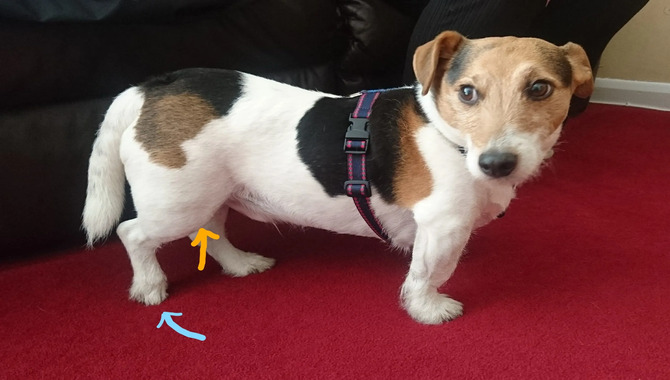
If your dog has hip dysplasia, the sooner you can treat it, the better. Surgery is only an option if other treatments haven’t worked. There are two types of surgery – open and arthroscopic -and they both carry some risks. Non-surgical treatments include physical therapy and medication.
Late Surgical Treatment
Hip dysplasia is a disease of the hip joint that results in looseness and degeneration of the joint. It is usually treated with surgery, which can be done at any age. However, as hip dysplasia becomes more common as dog’s age, it becomes even more important to get it fixed while the dog is young.
There are a few risks associated with surgery- some minor and others major- but they are generally manageable if taken care of properly after surgery. For example, puppies may experience pain or inflammation following their operation; this will usually subside within a few days or weeks, depending on how severe the case is. Lameness post-surgical may also persist for a short period of time, but most cases resolve fairly quickly once therapy starts.
Conclusion
Hip dysplasia is a common disease that affects dogs of all ages. There are several symptoms of hip dysplasia in dogs, the most common of which is lameness in the hind legs. This can be intermittent at first but usually progresses to a constant limp.
You may also notice your dog has difficulty getting up from a lying or sitting position or that they seem to be in pain when walking or running. Other signs include decreased activity level, muscle wasting in the hind legs, and joint swelling. It is caused by the abnormal formation of hip joint cartilage. This can lead to lameness, arthritis, and even death in dogs. To learn more about hip dysplasia in dogs and the signs that your dog may be suffering from it, read on.
Frequently Asked Questions
What Are The First Signs Of Hip Dysplasia In Dogs?
If your dog is having trouble getting up after a fall or losing balance, there’s a good chance it may be suffering from hip dysplasia. Hip dysplasia is a condition that affects the hip joint, typically occurring in dogs over the age of five.
The condition can often go undetected for quite some time until it’s too late- it could result in your dog succumbing to joint disease or even total hip replacement surgery.
How Long Can A Dog Live With Hip Dysplasia?
Dogs with hip dysplasia can have long and healthy lives provided they are treated promptly. Hip dysplasia is a disease of the hip joint that occurs when the ball-and-socket joint that allows the dog’s femur (thighbone) to rotate becomes malformed. Symptoms of hip dysplasia typically include lameness, difficulty getting up from a sitting or lying position, and excessive weight-bearing on the affected joint. If caught early enough, hip dysplasia can often be repaired using surgery.
Can Dog Hip Dysplasia Be Fixed?
There is no one-size-fits-all answer to this question, as the answer largely depends on the dog’s age, breed, and health condition when diagnosed with hip dysplasia. However, in general, surgery to fix canine hip dysplasia is usually successful in restoring function and reducing pain.
What Can I Do To Help My Dog With Hip Dysplasia?
There are many things that you can do to help your dog with hip dysplasia. The most important thing is to start by providing them with a healthy and balanced diet. Make sure that their food contains enough of the right vitamins and minerals and that they get plenty of exercises both mentally and physically. There are many supplements that can be given to help with hip dysplasia, but it is always important to talk to your veterinarian first. If you notice any changes or abnormalities in your dog’s gait or hind legs, be sure to get in touch with their veterinarian immediately.
Why Would You Give Your Dog Glucosamine?
Dogs suffering from hip dysplasia can benefit from the use of glucosamine supplements. Glucosamine is a natural supplement that has been shown to help in the treatment of hip dysplasia. By giving your dog glucosamine, you’re helping him maintain mobility and joint health. It’s important to start young dogs on glucosamine supplements to get the most benefit out of it.

Aquarium passion is all about connecting with the aquatic life and providing education to the public on the importance of these creatures. We showcase a wide variety of marine life through our exhibits as well as working with schools to provide unique learning opportunities for students of all ages.









